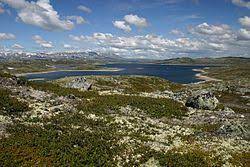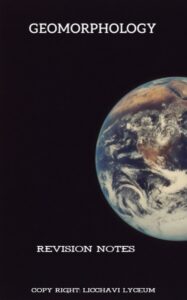The term Peneplain was coined by William Morris Davis. It is a geological feature that refers to a broad, nearly level, plain that has been worn down by erosion over a long period of time.

Table of Contents
Formation of Peneplain
Peneplains are formed by a combination of erosion and weathering processes. The uplift of an area leads to the exposure of rocks, which are then subjected to weathering processes such as chemical breakdown, mechanical disintegration, and biological decay. Erosion then removes the loose material, leaving behind a relatively flat and featureless surface.
Over time, the surface of the peneplain may be further modified by geological processes such as volcanic activity, tectonic movements, and climate change. These processes can cause the peneplain to be uplifted or depressed, and can also lead to the formation of new landforms such as mountains, valleys, and plateaus.
Types of Peneplain
There are several different types of peneplains, each with its own unique characteristics. Some of the most common types include:
- Erosional Peneplain – formed by the continuous erosion of an area over a long period of time.
- Structural Peneplain – formed by the uplift and erosion of an area that has been tectonically active.
- Depositional Peneplain – formed by the deposition of sedimentary rocks in an area over a long period of time.
Significance of Peneplain
Peneplains are significant geological features that provide valuable insights into the history of the earth. By studying the formation and characteristics of peneplains, geologists can gain a better understanding of the processes that shape our planet.
Peneplains also have practical applications in fields such as mining and agriculture. The flat, featureless surface of peneplains makes them ideal locations for farming and grazing, while the underlying rocks may contain valuable mineral deposits.
In conclusion, Peneplain is a fascinating geological feature that has played a significant role in shaping our planet’s landscape. Whether you’re a geologist, farmer, or miner, understanding the formation and characteristics of peneplains is essential for gaining a better understanding of the earth’s history and for making informed decisions about land use.
Summary
- Peneplain is a geological feature that refers to a broad, nearly level, plain that has been worn down by erosion over a long period of time.
- Peneplains are often found in areas that have undergone significant uplift or tectonic activity, resulting in the exposure of older, underlying rocks.
- Peneplains are formed by a combination of erosion and weathering processes and can be further modified by geological processes such as volcanic activity, tectonic movements, and climate change.
- There are several types of peneplains, including erosional, structural, and depositional peneplains.
- Peneplains provide valuable insights into the history of the earth and have practical applications in fields such as mining and agriculture.
- Understanding the formation and characteristics of peneplains is essential for gaining a better understanding of the earth’s history and for making informed decisions about land use.
MCQ
Q. What is a peneplain?
a. A broad, nearly level plain formed by tectonic activity
b. A narrow, steep-sided valley formed by erosion
c. A tall, pointed mountain formed by volcanic activity
d. A deep, wide canyon formed by glaciation
Answer: A. A peneplain is a broad, nearly level plain that has been worn down by erosion over a long period of time, often formed by tectonic activity.
Q. How are peneplains formed?
a. By the deposition of sedimentary rocks over a long period of time
b. By the continuous erosion of an area over a long period of time
c. By volcanic activity and tectonic movements
d. By glaciation and climate change
Answer: B. Peneplains are formed by a combination of erosion and weathering processes, such as chemical breakdown, mechanical disintegration, and biological decay, that remove loose material and leave behind a flat and featureless surface.
Q. What are the different types of peneplains?
a. Erosional, structural, and depositional
b. Mountain, valley, and plateau
c. River, lake, and ocean
d. Desert, forest, and grassland
Answer: A. The different types of peneplains are erosional, structural, and depositional peneplains, each formed by different geological processes.
Q. What is the significance of peneplains?
a. They provide insights into the history of the earth
b. They are ideal locations for mining and extraction of mineral deposits
c. They are important for understanding the formation of mountain ranges
d. They are essential for predicting natural disasters like earthquakes
Answer: A. Peneplains provide valuable insights into the history of the earth and the processes that shape our planet.
Q. Why are peneplains important for agriculture?
a. They are ideal locations for the construction of dams and reservoirs
b. They are rich in mineral deposits used as fertilizers
c. They have a flat, featureless surface that is ideal for farming and grazing
d. They have a unique climate that is perfect for growing crops
Answer: C. The flat, featureless surface of peneplains makes them ideal locations for farming and grazing.
